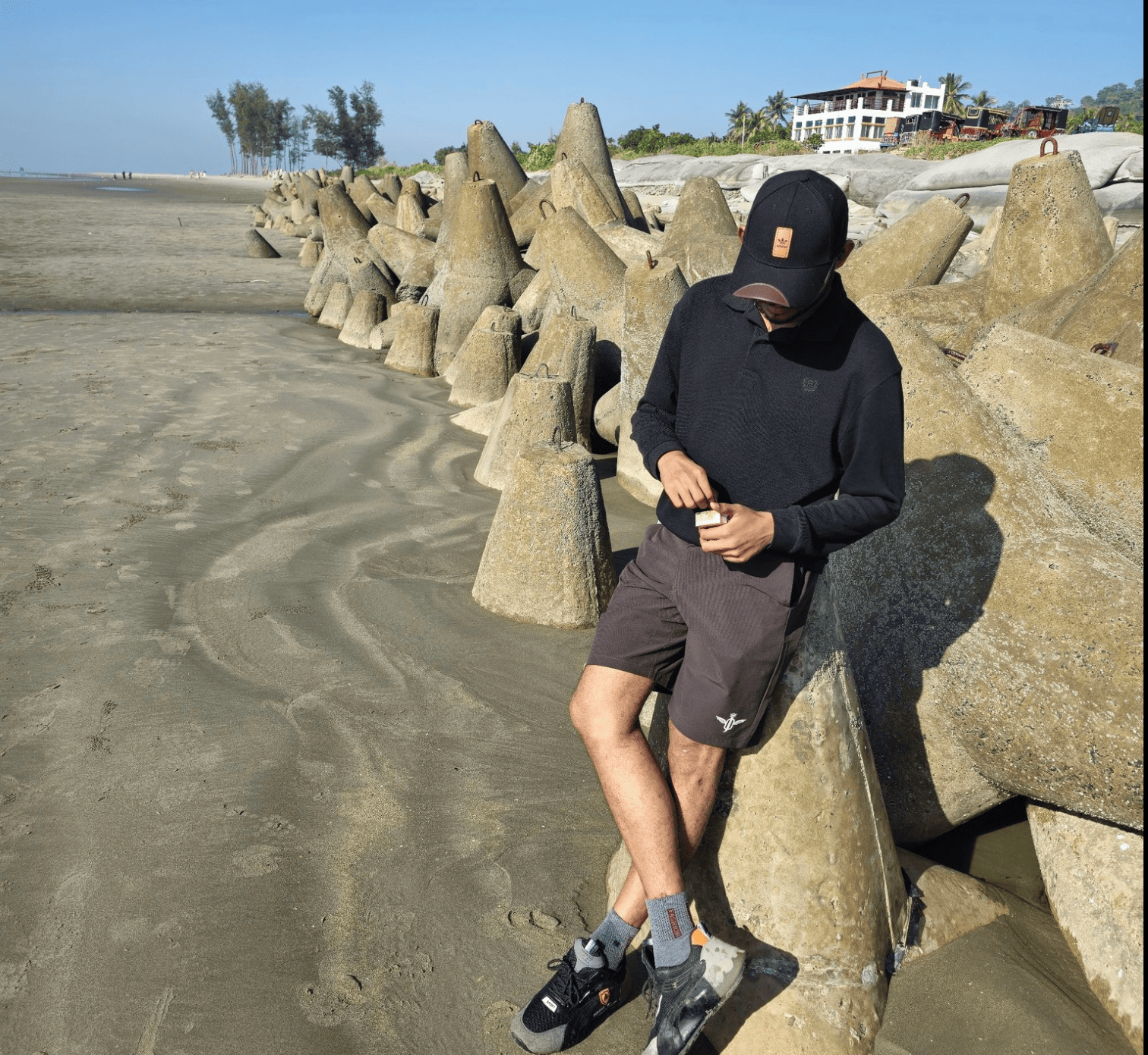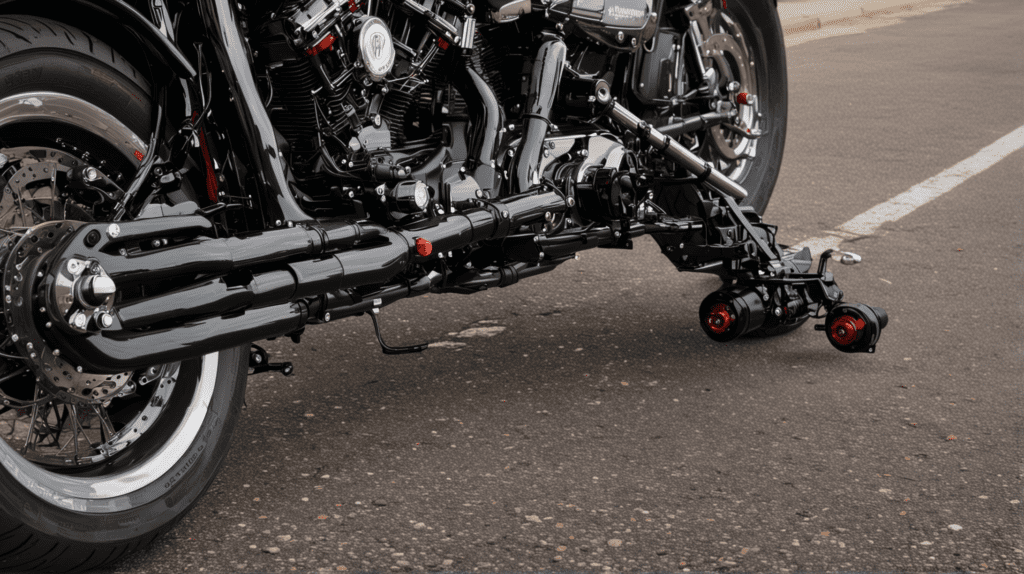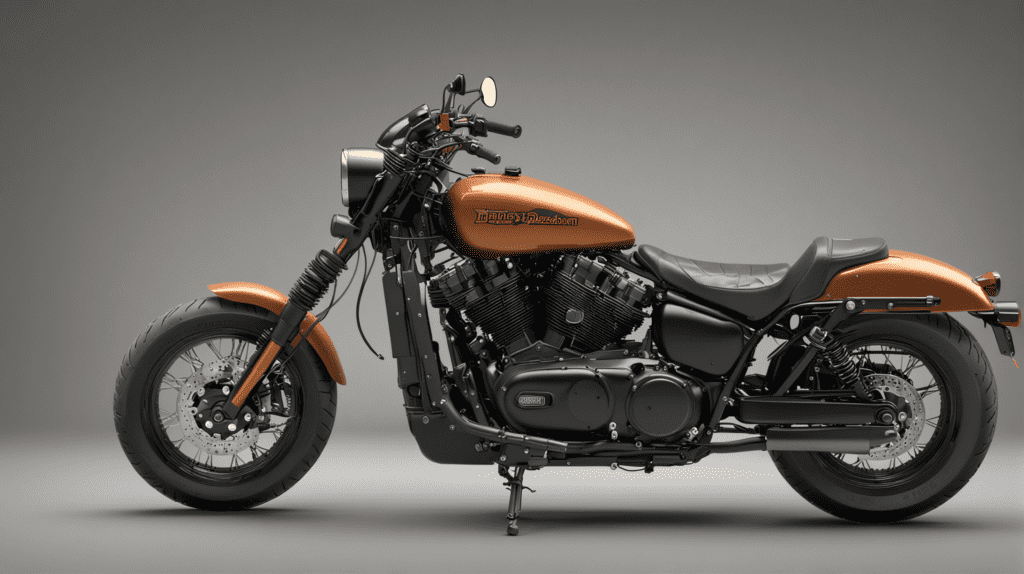As a long-time motorcycle enthusiast, I’ve ridden many bikes over the years, but none have quite piqued my curiosity, like the Harley Pan America.
The promise of an American-made adventure motorcycle was thrilling, to say the least. However, it didn’t take long for my initial excitement to be marred by a series of problems.
My journey with the Harley Pan America was not all smooth riding but rather a bumpy ride filled with unexpected potholes.
In this guide, I will share all of these problems I faced with my Harley Pan America.
Harley Pan America Problems
A few riders have reported problems with the motorcycle’s Adaptive Ride Height (ARH) feature, which is designed to automatically adjust the bike’s suspension depending on the riding conditions.
This feature, while innovative and promising on paper, has been reported to malfunction, leading to unexpected changes in ride height and instability.
Pan America’s weight distribution has been another point of contention. It has also faced starting issues, fuel pump issues, and radiator leaks over time.

1. Ground Clearance and Suspension Issues
Despite boasting impressive specs on paper, it has confronted some criticism regarding its ground clearance and suspension.
Ground clearance is a vital factor for any adventure motorcycle, affecting its ability to tackle diverse terrain and obstacles.
Some owners have reported issues with the bike’s ground clearance, suggesting that it is less than ideal for more challenging off-road conditions.
In more rugged terrain, the bike struggles with obstacles and undulations due to this limited clearance, potentially causing damage to the underside.
Similarly, Pan America’s suspension system has also been a topic of discussion among riders.
Despite having a Showa BFRC-lite rear shock and a 47mm inverted Showa BFF fork on the front.
Some riders have found the suspension to be less responsive than expected on bumpy roads, impacting the overall ride comfort and handling.
To address these problems, you may need to consider additional modifications, such as upgrading to an aftermarket suspension system or adjusting the preload and damping settings to better suit your personal riding style and the conditions you typically ride in.
As for ground clearance, depending on the severity of the issue, you may need to consider equipment such as skid plates to protect the bike’s underside.
2. Faulty Instruments Cluster
This major functional element is responsible for displaying crucial information to the rider, including speed, fuel level, rpm, and gear selection.
Problems with the instrument cluster can result in sporadic operation, blank displays, or inaccurate readings, which can potentially compromise safety.
Users have reported instances where the instrument cluster on the Pan America would go completely blank at random times.
This temporary blackout lasts a few seconds to several minutes, leaving the rider without any vital information.
Some riders have linked this issue to vibrations from the bike shaking the internal components of the instrument cluster, causing temporary failure.
However, the fuel gauge shows a full tank one moment and an empty tank the next. This inconsistency causes riders to run out of fuel unexpectedly.
To troubleshoot these issues, you should check the electrical connections to the instrument cluster.
Ensure that the connectors are fully seated and that there are no frayed wires or corrosion that could be causing intermittent connection issues.
If the connections are all good, the problem could lie within the instrument cluster itself. In such a case, you might need to have the cluster repaired or replaced.
3. Malfunctioning Fuel Pump
The fuel pump is a critical component of the motorcycle as it sends fuel from the tank to the engine.
If it starts failing, a series of issues may arise, such as poor performance, difficulty in starting the motorcycle, and even engine stalling while riding.
A faulty fuel pump usually presents initial telltale signs such as poor throttle response, uneven idle, and lower fuel economy.
If these symptoms are ignored, the motorcycle may even refuse to start or, worse, stop functioning while on the move.
To fix a malfunctioning fuel pump, it’s always advisable to seek professional help. However, if you have some mechanical knowledge, you can attempt to diagnose the issue.
Start by checking the fuel pump fuse, then inspect the fuel pump relay, and finally, the pump itself.
Be aware, though, that this involves handling highly combustible materials and should be done with utmost care.
In some cases, cleaning or replacing the fuel filter can resolve the issue. However, if the fuel pump is indeed faulty, a replacement is usually the best course of action.
4, ECU Issues
The Electronic Control Unit (ECU) has been the subject of numerous complaints due to its performance and reliability issues.
The ECU is the motorcycle’s brain, controlling engine power output, fuel management, and other critical functions.
However, several owners have reported erratic behavior, with the motorcycle seemingly having a mind of its own.
This could result in unexpected acceleration, stalling, or difficulty in starting the engine.
Such issues can prove harmful, especially while riding at high speeds, as they can lead to loss of control.
To resolve these issues, it’s recommended that an ECU reset is performed. Here’s a basic guide on how to do it:
- Ensure the motorcycle is turned off.
- Disconnect the battery, starting with the negative terminal followed by the positive one.
- Wait for about 20 minutes. This waiting time allows the ECU to discharge and fully reset.
- Reconnect the battery, starting with the positive terminal followed by the negative one.
- Turn on the motorcycle and let it idle for about 10 minutes. This allows the ECU to relearn the idle parameters.
5. 5th Gear Problem and Faulty Lights
Some users have reported excessive noise and vibrations when the motorcycle is in 5th gear. This might be due to inadequate lubrication or potentially misaligned gears.
To troubleshoot this, first check the level and condition of your transmission fluid. If it’s low or dirty, it needs replacing.
If the problem persists, a thorough inspection of the gearbox by a professional mechanic should be the next step, as it might require a gear realignment or replacement.
Faulty lights are another prevalent issue with the Harley Pan America. There have been reports of intermittent functionality of head and tail lights, which poses a safety risk.
This could be due to a multitude of reasons, from a blown bulb to an issue with the motorcycle’s electrical system. Start by checking the bulbs.
If they’re in working condition, inspect the fuses and wiring for any sign of damage or corrosion.
If everything seems fine but the problem still persists, it’s recommended to take your motorcycle to a professional.
6. Radiator Leak
Radiator leaks can potentially lead to overheating, impairing the motorcycle’s performance and potentially damaging its engine.
Radiator leaks typically occur due to the corrosion of the radiator’s metal parts or the rupture of the radiator hoses.
If you notice a puddle of coolant underneath your motorcycle or observe that the coolant level is dropping rapidly, these could be signs of a radiator leak.
To diagnose a radiator leak, you should ensure that the engine is cooled down to avoid burns.
Next, inspect the radiator for any visible signs of leakage, such as wet spots or dripping coolant.
You can also use a pressure tester to check for leaks. Attach the tester to the place where the radiator cap goes and apply pressure.
If the pressure drops, it’s a clear sign there is a leak somewhere.
Repairing a radiator leak can be a complex task. However, if you want to give it a try, you can use a high-quality radiator stop-leak product.
7. Vibration Problem
While the Pan America is a notable entry into the adventure motorcycle market, some riders have reported issues with excessive vibration.
This problem is typically more notable at higher RPMs or prolonged highway speeds.
It could be a result of engine harmonics, an unbalanced driveline, or even due to the mounting of the engine and other components.
The Harley Pan America uses a 1250cc V-Twin engine, which is inherently prone to creating more vibration due to its design.
The vibration can be felt through the handlebars, footpegs, and seat, which can lead to discomfort during long rides.
If you encounter this issue, it’s recommended to have your bike inspected by a certified technician.
They can help ensure the engine mounting bolts are torqued correctly, the driveline is balanced, and there are no loose parts.
Aside from professional help, adopting a smoother riding style can also help minimize vibration.
Gradual acceleration and avoiding high RPMs can reduce the amount of vibration transmitted to you.
Padded gloves and boots can also add an extra layer of insulation against vibration.
8. Seat Issues
The seat, while being significantly comfortable for short rides, has been described as uncomfortable over longer distances.
The discomfort primarily arises from the hard foam and narrow design, which puts extra pressure on the rider’s sit bones.
To troubleshoot these seat issues, you may consider investing in a seat pad or cushion for added comfort and support.
There are a variety of seat pads available in the market made from different materials like gel, air, or foam.
These pads can help distribute the weight more evenly, reducing the pressure on the sit bones.
Another option could be to replace the default seat with a wider and more padded aftermarket one.
It’s worth noting that seat comfort is subjective and depends on your personal preference and physique.
9. Starting Issues
A common issue of concern among Pan-American owners is the starting problem. This issue results in the motorcycle’s inability to start or hesitation during the ignition process.
The root cause of starting problems can be traced back to a few key areas. A weak or dead battery is often the most common reason for starting issues.
If the battery is in good condition, inspect the starter relay and see if it’s functioning properly.
Next, take a look at the ignition switch. If the ignition switch is faulty, it can prevent the motorcycle from starting.
Checking the spark plug can also be helpful. A worn-out spark plug fails to ignite the fuel-air mixture inside the cylinder, resulting in a starting problem.
If all these check out, consider the possibility of a clogged fuel system. It may be that the fuel filter or injectors are clogged, preventing fuel from reaching the engine.
In case you’ve checked all these possibilities and the problem persists, it’s advisable to take your motorcycle to a Harley authorized service center for a thorough inspection.
Harley Pan America Specifications
| Specification | Details |
| Engine Type | Revolution Max 1250 |
| Displacement | 1252 cc |
| Bore x Stroke | 105 mm x 72 mm |
| Compression Ratio | 13.0:1 |
| Maximum Power | Approx. 150 hp |
| Maximum Torque | Approx. 94 ft-lb |
| Fuel System | Electronic Sequential Port Fuel Injection |
| Cooling System | Liquid |
| Transmission | 6-Speed |
| Final Drive | Chain |
| Front Suspension | Showa 47mm inverted forks, fully adjustable |
| Rear Suspension | Linkage-mounted, monoshock, fully adjustable |
| Front Brakes | Dual Brembo monoblock four-piston calipers |
| Rear Brakes | Single-piston floating caliper |
| ABS | Cornering-Enhanced Antilock Braking System |
| Traction Control | Standard, with multiple modes |
| Front Tire | 120/70R19 |
| Rear Tire | 170/60R17 |
| Seat Height | Adjustable, 850 mm to 870 mm |
| Dry Weight | Approx. 242 kg |
| Fuel Capacity | 21.2 Liters |
| Electronics | TFT Display, Bluetooth, Navigation, etc. |
| Riding Modes | Multiple (Road, Rain, Off-Road, etc.) |
Harley Pan America User Reviews:
By Harleyboy
“All round ability is superb, especially as it is a first attempt in the sector by the manufacturer. There were teething issues related to the complexity of the electronics, but recent large software downloads have sorted everyone’s machines that have received it, including an update to the visual aspect of the screen display.”
By Rick Trengove
“A great effort for the first attempt. Some superb features but definitely built down to a price to keep it competitive. The engine is definitely its strongest asset. Adaptive ride height, linked brakes and modes that really make a difference to the character and performance. Brittle cheap plastics and a grab rail you can’t grab in case it breaks. Battery and electrics right behind the front tyre, totally pointless mudguards front and rear.. There’s a reason other bikes have broken Mr HD. Try testing in the rain and mud, not just the desert. I’ve never owned a bike that gets so covered in crud.”
By Harleyted
“Having owned a good few bikes over many years, this is the first that I don’t feel the need to change the seat as it’s really comfortable. I doubt whether I will ever ride it off-road, but even if I don’t, I am not too keen on the location of the battery, which is situated at the bottom of the frame.” Motorcyclenews.com

Tonmoy, the brains behind the influential motorcycle-focused website, TwoWheller.com, is a dedicated and passionate advocate for biking culture. Born and raised in a family of motorcycle enthusiasts, his love for two-wheeled transportation was ignited at an early age. His commitment to providing in-depth reviews and helpful tips for riders has established him as a respected figure in the motorcycle community.

